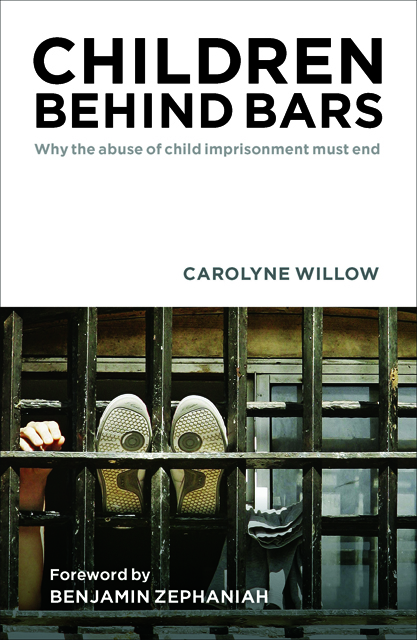Book contents
- Frontmatter
- Contents
- List of tables
- About the author
- Acknowledgements
- Preface
- Foreword by Benjamin Zephaniah
- one Introduction
- two ‘Things were not right at home’
- three ‘They just don’t listen’
- four ‘I think it’s quite like rape’
- five ‘I can’t breathe’
- six ‘What gives them the right to hit a child in the nose?’
- seven ‘We should be able to hug our families’
- eight ‘Every night I’m starving’
- nine Children were ‘given bags to urinate in’
- ten ‘The violence is unbelievable’
- eleven ‘Listen to the kids’
- twelve They shouldn’t be there
- Notes
- Index
ten - ‘The violence is unbelievable’
Published online by Cambridge University Press: 15 April 2023
- Frontmatter
- Contents
- List of tables
- About the author
- Acknowledgements
- Preface
- Foreword by Benjamin Zephaniah
- one Introduction
- two ‘Things were not right at home’
- three ‘They just don’t listen’
- four ‘I think it’s quite like rape’
- five ‘I can’t breathe’
- six ‘What gives them the right to hit a child in the nose?’
- seven ‘We should be able to hug our families’
- eight ‘Every night I’m starving’
- nine Children were ‘given bags to urinate in’
- ten ‘The violence is unbelievable’
- eleven ‘Listen to the kids’
- twelve They shouldn’t be there
- Notes
- Index
Summary
Enter a primary school playground and you are bound to encounter human aeroplanes with outstretched limbs taking their pilots sky high; child-sized spinning tops with wild hair and scuffed shoes; and the classic caped crusader, free at last of zips, toggles and Velcro. Finding a safe space to stand, you may spy a few dishevelled children propping up walls, alone, and others with hands clasped to adult protectors. There will always be uncomfortable sights, but the prevailing atmosphere of a children’s play area is happy and inviting. Go into a child prison and you will find miserable, frightened children making desperate attempts to hide their frailty. This is not about the different demeanours of those inhabiting the early years and adolescence. It is prison – an utterly perverse setting in which to find the young. Whenever I was escorted on to a wing for visits with a former child in care (p xiii), the experience felt like entering a building after someone – everyone – had been given devastating news.
Ryan Clark was found hanging in his cell in Wetherby young offender institution in April 2011. One of his older brothers said at the subsequent inquest that Ryan was ‘scared to death’ about being imprisoned. This was a child who had been in care since he was a toddler, and was now in custody for the first time. He was right to be afraid. During my research for this book, youth justice expert Pam Hibbert told me about a boy she had interviewed in prison who, unusually, had previously lived in a boarding school. For him, being admitted to prison:
‘... was akin to his first day at private school: he was scared of the staff, he was scared of the boys, he knew that something horrible was going to happen fairly soon’.
In his memoir on life inside, ex-prisoner Erwin James explains that there is ‘a frightening precariousness to prison life’ and runs through an exhausting list of peer cruelty:
The cell doors were opened only briefly at mealtimes, but long enough for the almost daily incidents of violence to take place. The violence appeared to erupt over arguments which had started during the shouting out of cell windows or, more often, it involved ambushes of suspected sex offenders or attacks on former acquaintances who had turned informers….
- Type
- Chapter
- Information
- Children behind BarsWhy the Abuse of Child Imprisonment Must End, pp. 211 - 230Publisher: Bristol University PressPrint publication year: 2015

